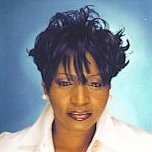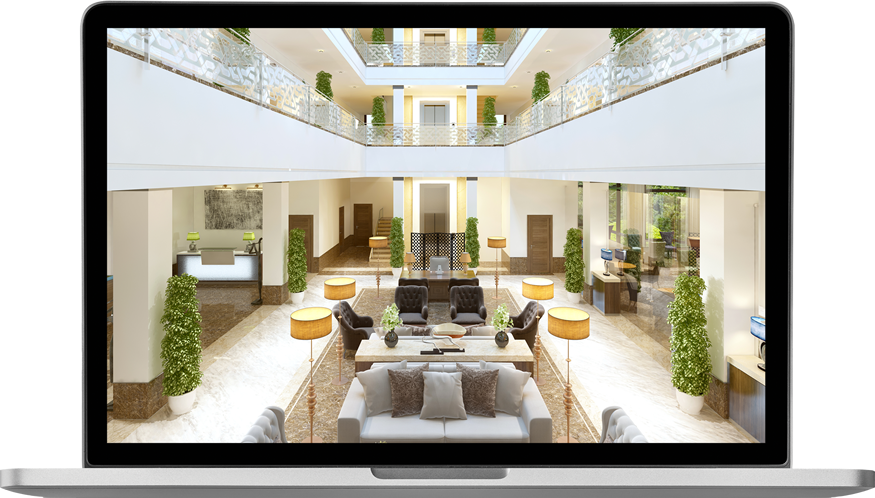Imagine for a moment your hotel website is not getting the amount of reservations you expect. You and your staff need more guests to come in and there are fewer reservations being created by your website. Maybe your website gets plenty of traffic, but if it is not generating reservations, then it is not doing its job.
Many clients, both new and old, are constantly wondering what can be done to their website to generate more bookings. The solution is a full scale improvement of your website called conversion optimization.
What is Conversion Optimization?
Conversion optimization is taking a look at your site as a whole as well as the individual pages and using every opportunity to make a visitor complete your desired goal, like make a room reservation.
The use of analytics and data is key to any conversion optimization task. To figure out how to generate more bookings you need to use analytics and make sure you are tracking how visitors move throughout your site. Lines of code embedded into links on your pages allow you to classify a variety of identifying features onto these links. Is it an internal link? External? Is it a PDF file or a new page? Is the guest booking a room? All of these questions can be answered with properly implemented analytics codes and can shape your future decisions.
With this data you are not worrying nearly as much about where your guests are coming from, but what they are doing on your site. With this knowledge you learn what actions are most common on your pages, what pages are helping you achieve your goals, and which pages require more work.
Using Your Data
Some pages should be expected to generate a large number of bookings, while others may be expected to generate very few. For example, your rooms page should have a high rate of conversions (bookings), while a page about a nearby local attraction will probably have relatively few. You should have different expectations for each page; however, they can be broken down into categories to make these goals easier to organize. As you look at individual pages and consider what actions you want users to take, consider how these actions contribute to your overall goal of reserving more rooms.
Some ideas you will want to consider as goals for your page can (and should) include:
- Maximizing conversions on pages that are performing well
- Generating more conversions on pages that are performing poorly
- Funneling visitors from pages from low conversion pages to high conversion ones
Creating A Sales Funnel
One of the best ways to get the most value out of your website traffic is to direct visitors to pages where they are most likely to convert, and minimize their opportunities to click back to a page where conversions are less frequent. By creating appropriate and compelling links and call-to-actions you can drive a portion of your traffic from one page onto another.
As an example, let us take a hypothetical website visitor and say that he or she came to your site via a local area page for an attraction near your hotel. They may just be looking for information about the attraction, or they may already be staying at your hotel and hoping to learn more. It can be expected, however, a percentage of people using that page are visiting your city with a plan to see that attraction and are looking at hotels nearby.
Those guests, the ones who are looking for a relevant hotel and are exploring their options are the ones you need to guide further down your sales funnel. If these visitors came to your site via a local attraction page like in our example you could move them further down your sales funnel by linking to a relevant special offer. If your hotel has a shuttle that reaches this attraction you have a prime opportunity to link to your amenities page. In fact, you can go so far as to create a callout for your rooms page, alerting guests that you have hotel rooms near this attraction!
The goal is not necessarily to get that guest to reserve a room right away (although it would be great if they did) but instead to convince them to keep looking at your hotel and invest more time in your website, making them more likely to finally reserve a room when they are ready.
What you need to do as you examine your website is to identify what purpose a page serves to a website visitor, and identify on that page what opportunities exist (or can exist) to bring visitors to a place where they are more likely to reserve a room, submit an rfp, or make a phone call.
The often overlooked factor is to lead visitors toward pages that have a higher success rate for conversions. If you have a visitor on your rooms page, you do not want to distract them with links to your local area pages. Those visitors were at a location where they were considering making a purchase and links to the local area pages are speaking to them as if they should stay at the hotel in the first place.
Similar to how a typical funnel takes what you are pouring into it in one direction and narrowing it down in the process, your sales funnel should take your website traffic and direct it down to a more specific location. Just like how a funnel would not bring fluid from the bottom to the top, you do not want to take visitors at the bottom (conversion page) of your sales funnel and take them to the top (information page). Also, just like a poor funnel would have leaks that let fluid escape, so would a poor sales funnel have opportunities for visitors to be directed away from your site permanently. When you get far into your sales funnel and are expecting them to convert, it is extremely important not to distract them with a bunch of links to irrelevant pages or other websites. For example, if a visitor is reading a page that heavily encourages them to reserve a guest room, it should be free of links to local area pages or the websites to those attractions, because they can only serve as a distraction that removes them from the sales funnel. You may have pages where it makes sense to include links away from your site, however in those cases it is vital to set them up to open in a new browser tab or window, allowing visitors to easily return to your site.
The “Types” of Website Pages
When you evaluate your website and determine where each page stands for your conversion funnel you can break them down into various categories to help determine what visitors are expected to do (and how you can help them get in position to book).
Some pages are focused on awareness and most of their visitors will be people doing the initial research on their stay. Visitors to these pages are the least prepared to reserve a room and are mostly likely looking at your hotel because of the page topic. These are pages about nearby local attractions or restaurants, your hotel has an existing selling point of being near that attraction, and it is the job of this page to showcase the reason for their arrival, as well as provide additional selling points to help them consider your hotel for their visit.
Examples of Awareness pages:
- Area Guides
- Shopping Guides
- Local Golf Courses
- Local Wineries
- Upcoming Events
- Nearby Restaurants
When a website visitor is ready to visit your city, but still needs to find out what hotel they want to stay in, or perhaps they are thinking they should stay at your hotel but are not fully prepared to make a decision that is when they find themselves on consideration pages. Here is where you have the best case to show the various benefits of your hotel. What high-value amenities do you offer? Where do your services stand out above the competition? What do you have control over that makes you the hotel to stay in?
Many visitors who land on these pages are often looking for general information about the hotel (they want to know your check-in time or if you have a complimentary shuttle or free WiFi) so they often see a higher percentage of visitors who leave the page without taking action. That being said, for visitors who are considering what hotel they want to stay in, these are the pages where you can make yourself seem like the place to be.
Examples of Consideration Pages:
- Amenities
- Meeting Space Information
- Your on-site restaurant
- Local Transportation
- Photo Gallery
The pages that are most likely to drive some serious revenue and bring in qualified traffic are called action pages. An action page showcases your rooms clearly and provides guests will multiple opportunities to book. These pages often assume a visitor is ready to stay at your hotel and is designed to make a case for helping them decide which room they want to stay in. Another example of an action page is one where you expect visitors to submit RFPs for an event space.
Examples of Action Pages:
- Rooms
- Requests for Proposal pages
- Special Offers and Packages
- Contact Pages
If a visitor has completed an action that drove revenue you will probably direct them to a thank you page, alternatively, if an action was somehow completed incorrectly or they followed a bad link a visitor may be taken to an error page. In these cases a visitor has either completed the sales funnel, or fallen out, and their job is to direct them back into it.
Even in the case of thank you pages, they may have not completed the reservation process, and it is ideal to continue to showcase your hotel. They key to keeping visitors on your website after they have completed an action is to have a few call to actions to different points in the funnel so they can follow what interests them.
How Your Pages Should Flow
Awareness, error, and thank you pages should be considered the earliest stages of a visitors experience. These visitors should be drawn back to the home page or to a relevant consideration or action page when applicable.
Visitors to a consideration page are typically what a salesperson would call a “warm lead” they are expressing an interest and want more information, they should be directed to action pages where they can be given a firm direction to book. If you have gotten visitors to an action page they are much more likely to reserve a room. You should not be distracting them with reasons to click away on this page, and instead should focus on strong call to actions for them to follow.
Conversion Optimization in a Nutshell
When optimizing your site for conversion you should think of your visitors narrowing down like a funnel. A wide range of visitors will be near the top (awareness), and it will flow down to a smaller number near the bottom (action). Not everything that goes into the funnel will come out as a success, but with these measures you can ensure that visitors will move through your website in the way you intend.
It can be difficult to always determine the best actions you want your website visitors to take when they arrive on your website. Our team is happy to work with you to discover the best methods to take your website to the next level. Reach out to our team and let us help you achieve your digital marketing goals!




